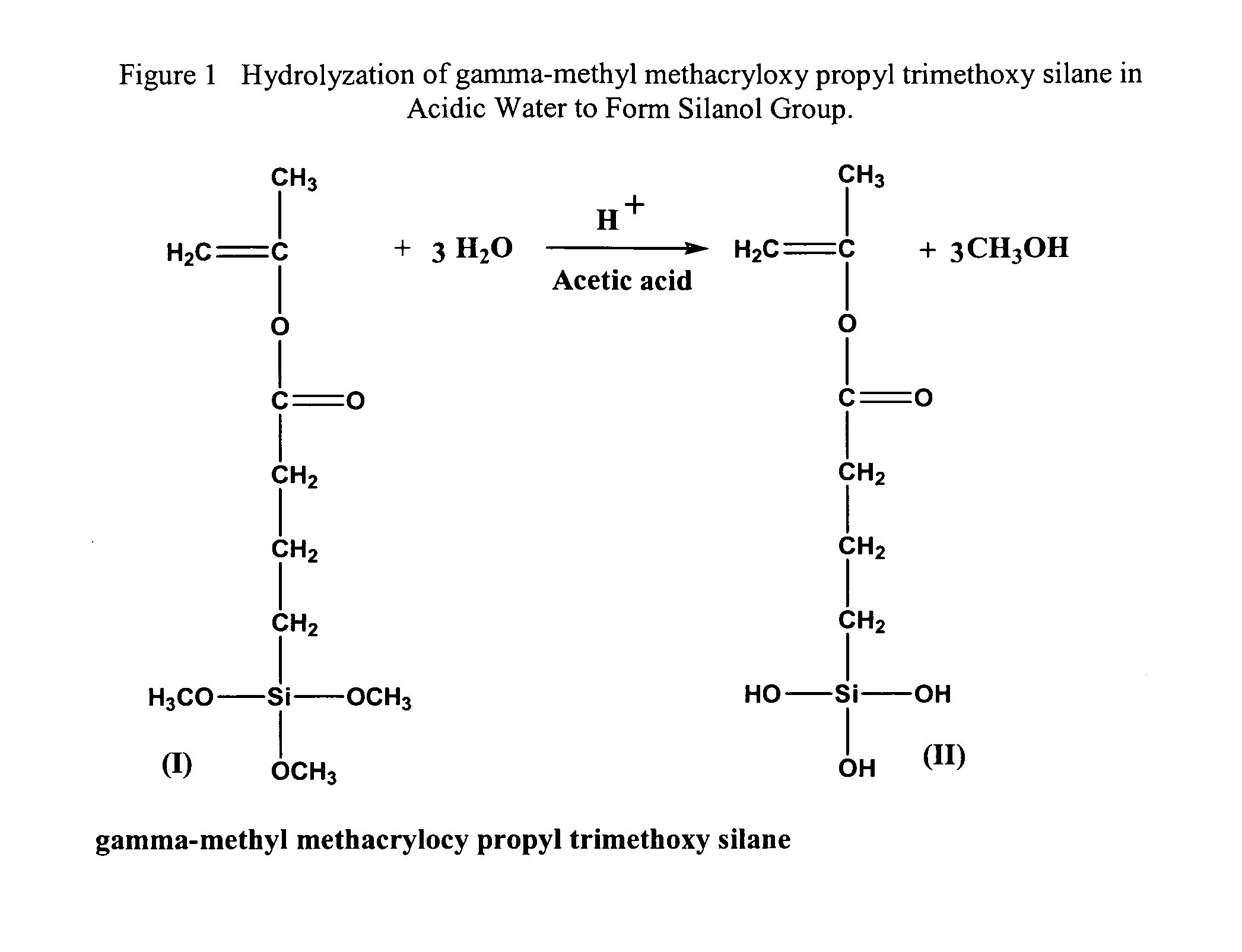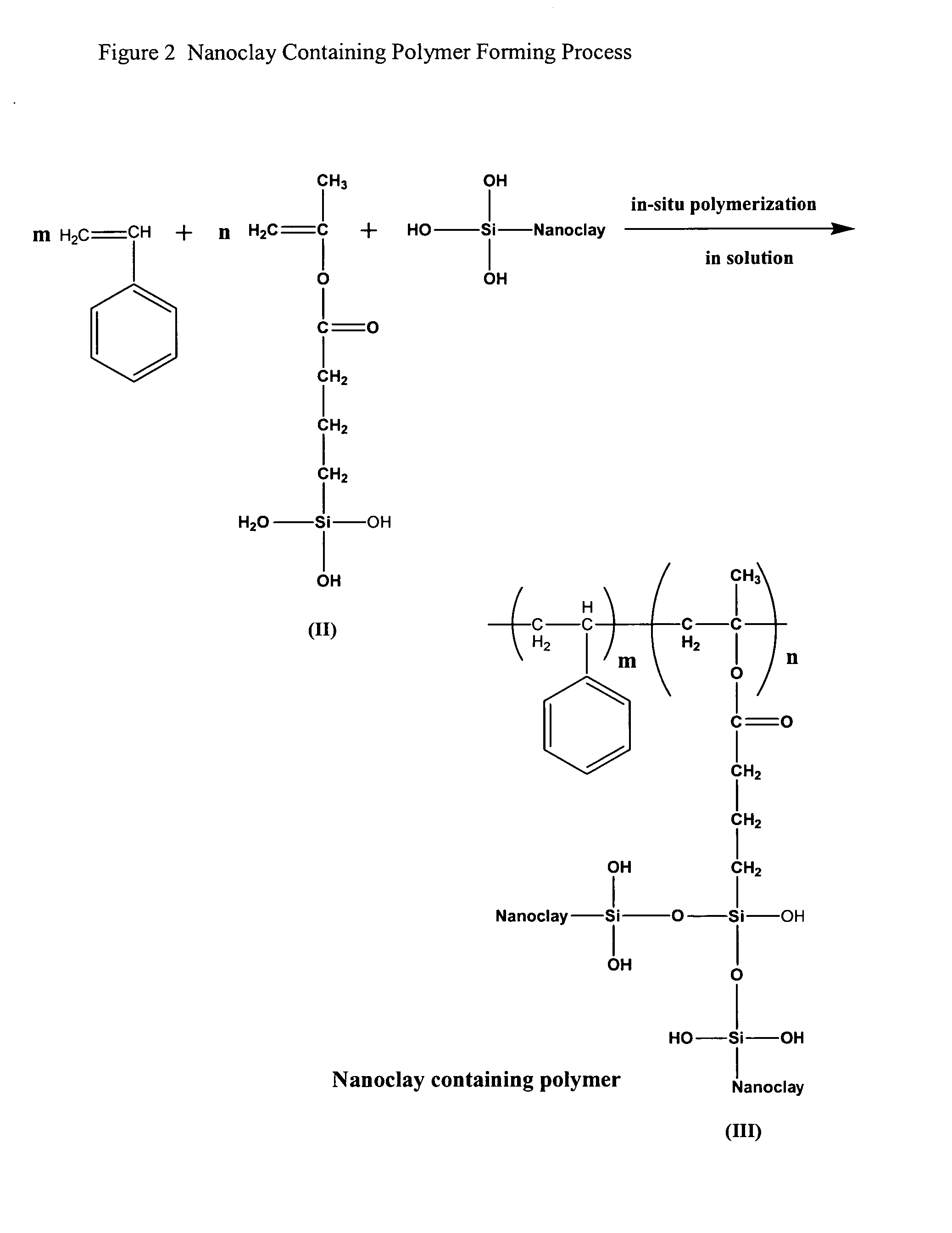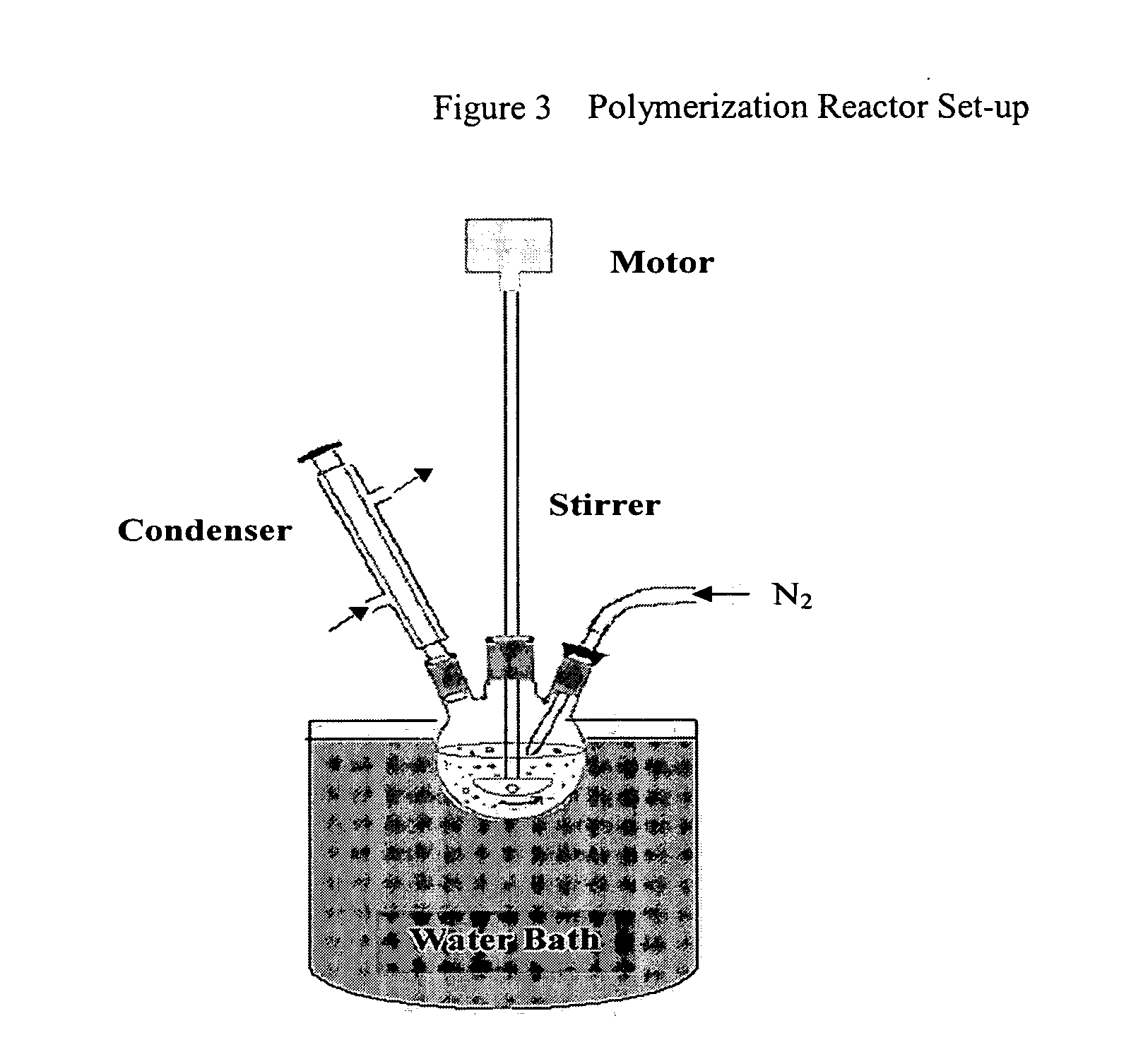Polystyrene foam containing a modifier-free nanoclay and having improved fire protection performance
a technology of polystyrene foam and modifier-free nanoclay, which is applied in the field of polymer foams containing modifier-free nanoclays, can solve the problems of fire hazards of surface modifiers, achieve the effects of reducing flame spread and dripping, increasing oxygen index and char formation, and increasing the resistance of foam products
- Summary
- Abstract
- Description
- Claims
- Application Information
AI Technical Summary
Benefits of technology
Problems solved by technology
Method used
Image
Examples
example 1
Synthesis of Water-Containing Polystyrene Nanoclay Composites Via Inverse Emulsion / Suspension Polymerization
[0048] The polymerization experiments were performed in a 1000 ml three-neck round flask 10 fitted with an impeller stirrer 20 propelled by a motor 30, reflux condenser 40, and nitrogen inlet 50 as shown in FIG. 1. The flask 10 was positioned in a warm water bath 60. Styrene with dissolved 2,2′-azobis (isobutyronitrile) (AIBN), benzoyl peroxide (BPO), and bis(2-ethylhexyl) sulfosuccinate (AOT) in an amount of 10% by weight based on the emulsified water was stirred at 350 rpm at 90° C. under a nitrogen blanket to form a pre-polymerized styrene / polystyrene system.
[0049] The synthesis reaction was performed in bulk with a conversion of approximately 60% (determined by offline DSC). A water / NaCl mixture for preparing polystyrene beads containing emulsified water / NaCl (control) or a water / clay (Na+MMT) / NaCl mixture for preparing the polymer beads containing myriads of water / nanoc...
example 2
Extrusion of Polystyrene Foams by Pre-Compounded Water / Na+MMT with or without a Superaborbent
[0057] Table 2 summarizes the experimental trials of four samples, A, B, C, and D. Sample A was a control sample, and contained no Na+MMT, polystyrene, or process aids. Process aids, such as Emkarate, a low molecular weight diester available from Alco Chemical, were used in Samples B-D to improve the appearance and to control the cell structure of the extruded foam. Compounds B and C were prepared by using a Leistritz twin-screw extruder and then pelletized. Sample D was extruded in the same twin-screw extruder as Samples B and C but with 4% carbon dioxide as a foaming blowing agent. The extruder die temperature was approximately 120° C. and the die pressure was approximately 1350 psi.
TABLE 2Extrusion Foaming ComponentsProcessPolystyrene(a)Aid(b)Sample(%)Na+MMT (%)(%)A100Control sample0B85 510C85105D972 (with half amount of water)1
(a)NOVA NC0038 (a high melt index polystyrene)
(b)EMKARATE...
example 3
Fire Performance Testing
[0060] Fire performance tests (e.g., fire resistance) on foamed insulation with modified nanoclays and with modifier-free nanoclays as shown in Table 3 were conducted according to ASTM (oxygen index) and UL (Underwriters Laboratories in Northbrook, Ill.) small scale horizontal fire test methodology. The apparatus utilized to conduct the experimentation included a ⅜″ ferrule laboratory Bunsen burner, two ring stands with adjustable clamps, and a 4 inch×8½ inch hardware cloth (three mesh with 8 / 64″ stainless steel wire) with ½″ length bent upwards at 90 degree angle. The sample size utilized for testing was 2″×6″ and ½″ in thickness. To pass the UL small fire test for polystyrene foams, the duration of burning of the specimen should be less than 20 seconds, and the flame spread should extend less than 60 mm. In addition, the oxygen index for insulation required from ASTM C578 has a minimum of 24% in volume.
[0061] Na+MMT without modifier and Na+MMT with Closit...
PUM
| Property | Measurement | Unit |
|---|---|---|
| diameter | aaaaa | aaaaa |
| diameters | aaaaa | aaaaa |
| temperature | aaaaa | aaaaa |
Abstract
Description
Claims
Application Information
 Login to View More
Login to View More - R&D
- Intellectual Property
- Life Sciences
- Materials
- Tech Scout
- Unparalleled Data Quality
- Higher Quality Content
- 60% Fewer Hallucinations
Browse by: Latest US Patents, China's latest patents, Technical Efficacy Thesaurus, Application Domain, Technology Topic, Popular Technical Reports.
© 2025 PatSnap. All rights reserved.Legal|Privacy policy|Modern Slavery Act Transparency Statement|Sitemap|About US| Contact US: help@patsnap.com



